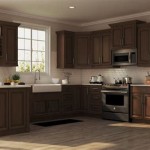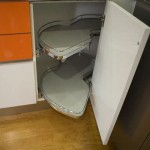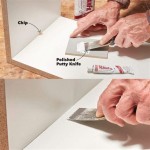36 Inch Kitchen Sink Base Cabinet: A Comprehensive Guide
The 36 inch kitchen sink base cabinet is a cornerstone of modern kitchen design, providing essential support and housing for the sink while offering valuable storage space. Its dimensions make it a versatile choice suitable for a wide range of kitchen layouts and sink sizes. This article offers a detailed exploration of the 36 inch kitchen sink base cabinet, covering aspects such as its dimensions, design considerations, material options, installation guidelines, and factors affecting its overall functionality.
Understanding the specifications and nuances of a 36 inch sink base cabinet is crucial for optimizing kitchen space and ensuring seamless integration with the overall kitchen design. This involves evaluating the specific sink requirements, considering counter top overhang, and planning for plumbing access. By carefully considering these elements, homeowners and designers can select and install a 36 inch sink base cabinet that meets both aesthetic and functional needs.
Dimensions and Space Considerations
The standard dimensions of a 36 inch kitchen sink base cabinet are typically 36 inches in width, 24 inches in depth, and 34.5 inches in height. These measurements are critical for accurate kitchen design and installation. The width of 36 inches allows for accommodating a wide range of sink sizes, including single-bowl, double-bowl, and farmhouse-style sinks. The 24 inch depth provides ample space for plumbing connections and storage within the cabinet. The 34.5 inch height, when combined with a standard 1.5 inch countertop, results in a comfortable working height of 36 inches, conforming to industry standards for kitchen ergonomics.
When planning a kitchen layout, accurately measuring the available space is paramount. Ensure there is sufficient clearance around the cabinet for comfortable movement and accessibility. Consider the proximity to other appliances, such as dishwashers and refrigerators, to optimize workflow. Also, take into account the placement of electrical outlets and plumbing connections, ensuring they align with the cabinet's location. Precise measurements and adherence to building codes are essential for a successful and safe installation.
The internal dimensions of the cabinet are equally important. These dictate the usable storage space available beneath the sink. Account for the space occupied by plumbing, such as drainpipes and water supply lines. Consider incorporating storage solutions, such as pull-out shelves or organizers, to maximize the efficiency of the available space. Planning the internal layout beforehand will streamline the installation process and enhance the overall functionality of the cabinet.
Design and Material Options
Kitchen sink base cabinets are available in a variety of designs and materials, catering to diverse aesthetic preferences and functional requirements. The design of the cabinet should complement the overall style of the kitchen, whether it is contemporary, traditional, or transitional. The choice of materials affects the cabinet's durability, maintenance requirements, and aesthetic appeal.
Common materials for kitchen sink base cabinets include plywood, particleboard, MDF (medium-density fiberboard), and solid wood. Plywood is a durable and water-resistant option, making it suitable for areas prone to moisture. Particleboard is a more affordable alternative but is less resistant to water damage. MDF offers a smooth surface for painting or laminating and is less prone to warping than solid wood. Solid wood is a premium option that offers exceptional durability and aesthetic appeal, but it requires more maintenance and is more susceptible to changes in humidity.
Cabinet door styles vary widely, ranging from simple shaker-style doors to more ornate raised-panel doors. The choice of door style should align with the overall kitchen design and personal preferences. Hardware options, such as knobs and pulls, can further enhance the aesthetic appeal of the cabinet. Consider selecting hardware that complements the cabinet's design and is comfortable to use.
The finish of the cabinet is another important design consideration. Painted finishes are available in a wide range of colors and can be easily customized to match the kitchen's color scheme. Stained finishes highlight the natural grain of the wood and provide a warmer, more traditional look. Laminate finishes offer durability and ease of maintenance, making them a practical choice for busy kitchens.
Installation Guidelines and Plumbing Considerations
Proper installation is crucial for the longevity and functionality of a 36 inch kitchen sink base cabinet. This involves securing the cabinet to the floor and walls, ensuring it is level and plumb, and properly connecting the plumbing. A poorly installed cabinet can lead to structural issues, water leaks, and other problems.
Before beginning the installation process, ensure all necessary tools and materials are readily available. This includes a level, screwdriver, drill, measuring tape, and safety glasses. Consult the manufacturer's instructions for specific installation guidelines. Begin by positioning the cabinet in its designated location and checking for levelness. Use shims to level the cabinet if necessary.
Once the cabinet is level, secure it to the floor and walls using screws. Ensure the screws are long enough to penetrate the studs in the walls for maximum stability. After securing the cabinet, connect the plumbing. This involves connecting the drainpipe to the sink drain and connecting the water supply lines to the faucet. Use Teflon tape on all threaded connections to prevent leaks.
Consider the specific requirements of the chosen sink when installing the plumbing. Farmhouse-style sinks, for example, may require additional support due to their weight. Ensure there is adequate clearance for the sink's drain assembly and water supply lines. Consult a qualified plumber if you are unsure about any aspect of the plumbing installation.
After connecting the plumbing, carefully check for leaks. Run water into the sink and inspect all connections for any signs of leakage. Tighten any loose connections as needed. Addressing leaks promptly will prevent water damage and ensure the integrity of the cabinet and surrounding areas.
Finally, install any accessories or storage solutions, such as pull-out shelves or organizers. These can significantly enhance the functionality of the cabinet and maximize the use of the available space. Ensure all accessories are securely installed and function properly.
Factors Affecting Functionality and Storage
The functionality of a 36 inch kitchen sink base cabinet extends beyond simply housing the sink. It also provides valuable storage space for cleaning supplies, dish soap, and other kitchen essentials. Optimizing the storage capacity and accessibility of the cabinet is crucial for maximizing its functionality.
The internal layout of the cabinet plays a significant role in its functionality. Consider incorporating pull-out shelves or organizers to make it easier to access items stored at the back of the cabinet. These accessories can significantly improve the efficiency of the available space and prevent items from being lost or forgotten.
The presence of plumbing can sometimes hinder storage. Plan the layout to accommodate the drainpipe and water supply lines, ensuring they do not obstruct access to stored items. Consider using dividers or bins to separate items and keep them organized. This will help prevent items from shifting around and potentially damaging the plumbing.
The location of the cabinet within the kitchen also affects its functionality. Position the cabinet in a location that is convenient for washing dishes and preparing food. Consider the proximity to the dishwasher and other appliances to optimize workflow. Also, take into account the placement of trash receptacles and recycling bins. Placing these items near the sink can make it easier to clean up after meals.
Regular maintenance is essential for maintaining the functionality of the cabinet. Clean the interior of the cabinet regularly to prevent the build-up of dirt and grime. Check for leaks periodically and address them promptly. Repair any damaged components, such as loose hinges or broken shelves, to ensure the cabinet remains in good working condition.
Furthermore, selecting appropriate accessories, such as door-mounted organizers for sponges and scrub brushes, can free up valuable space inside the cabinet. Under-sink mats can protect the cabinet floor from spills and leaks, extending its lifespan and preventing water damage. These seemingly small additions can significantly enhance the overall functionality and longevity of the 36 inch kitchen sink base cabinet.

Hampton Bay 36 In W X 24 D 34 5 H Assembled Sink Base Kitchen Cabinet Unfinished With Recessed Panel Ksb36 Uf The Home Depot

Sd Sb36 Shaker Dove 36 Sink Base Cabinet Cabinetselect Com

Hampton Bay 36 In W X 24 D 34 5 H Assembled Sink Base Kitchen Cabinet Satin White Ksb36 Sw The Home Depot

Project Source 36 In W X 35 H 23 75 D Natural Unfinished Oak Sink Base Fully Assembled Cabinet Flat Panel Square Door Style The Kitchen Cabinets Department At Com

Hampton Bay Avondale 36 In W X 24 D 34 5 H Ready To Assemble Plywood Shaker Sink Base Kitchen Cabinet Alpine White Sb36 The Home Depot

Farm Sink Base 36 Jamestown Unfinished Shaker Kitchen Cabinet Seconds Surplus

Diamond Now Caspian 36 In X 35 Sink Base Q At Com

36 Sink Base Kitchen Cabinet Momplex Vanilla Ana White

Kb Authority Specializes In Bathroom Sink Vanities Shower Doors Kitchen Faucets And More

Project Source 36 In W X 34 5 H 24 D White Painted Sink Base Fully Assembled Cabinet Recessed Panel Shaker Door Style The Kitchen Cabinets Department At Com
Related Posts








